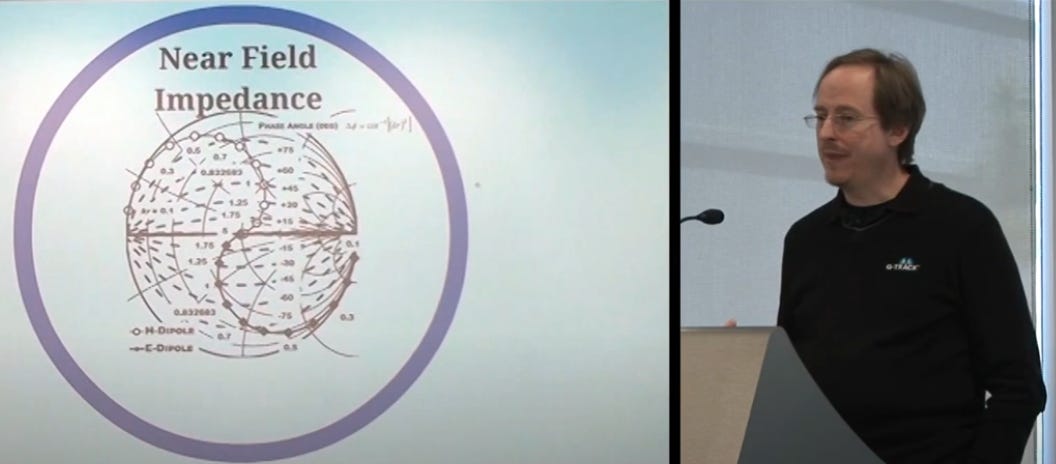I’ll be delivering a talk on the Origins and History of Relativity Theory at LibertyCon37 Saturday evening at 7pm (Meeting Room 6 - Science Track). Meanwhile, here’s a talk about the origins, history, and applications of near-field wireless technology.
Near-field wireless technology is an emerging area of great importance in Radio Frequency Identification (RFID). Specific applications include low frequency (LF) and high frequency (HF) RFID, Near-Field Communications (NFC), Near-Field Electromagnetic Ranging (NFER), and wireless power transfer.
My talk discusses the origins of near-field wireless, surveys applications, presents near-field links laws, and reviews the properties and performance of electrically-small antennas. This March 31, 2014 presentation to the Huntsville, AL section of the IEEE previews the full three hour workshop presented April 8, 2014 at the 8th Annual IEEE International Conference on RFID held in conjunction with 2014 RFID Journal Live.
Enjoyed the article, but maybe not quite enough to spring for a paid subscription?
Then click on the button below to buy me a coffee. Thanks!
Follow Online:
You may follow me online in other places as well:
Telegram: 𝔸𝕖𝕥𝕙𝕖𝕣𝕔𝕫𝕒𝕣'𝕤 𝔸𝕖𝕥𝕙𝕖𝕣𝕤𝕥𝕣𝕖𝕒𝕞
Gab: @aetherczar
Twitter: @aetherczar
Amazon: Hans G. Schantz





Nice job, Hans!
Wow. Learned a LOT here, and that's even factoring in how much went over my head.
Applied extrapolation - who (if anyone?) is looking at near field work in biological systems - can characteristic lengths (for multipath, gain, etc) of the biochemical "transmitter" (compound) be interestingly comparing to the optimal reaction distances for the "receiver" (another compound). Are complex compounds (e.g. DNA) 'communicating' optimally via vibrational and rotational modes. Is information about "shape" and "size" and "proximity" being broadcast by compounds in a 'noisy environment' (e.g. a cell)?